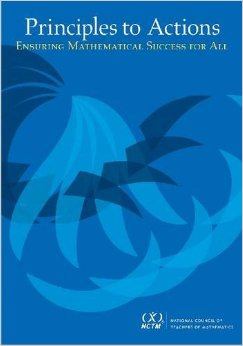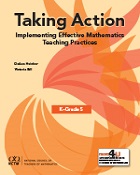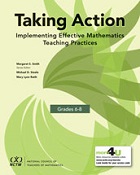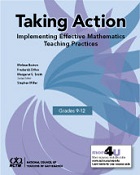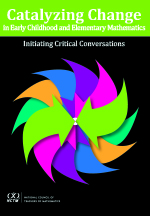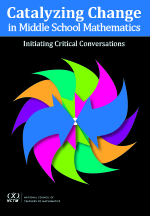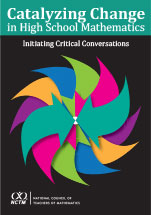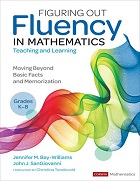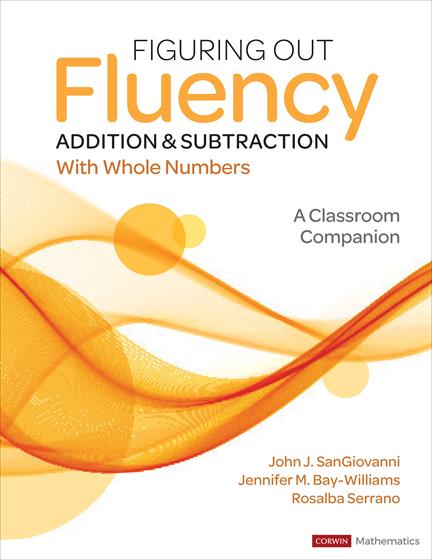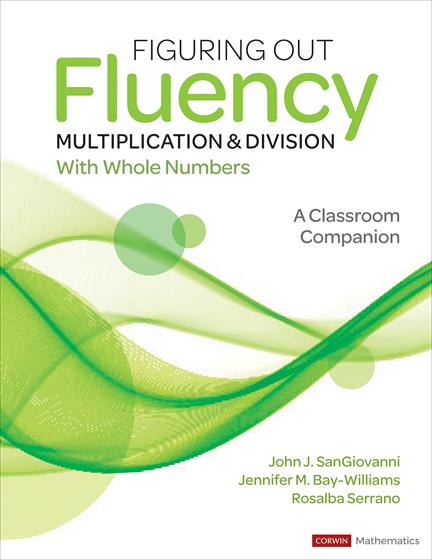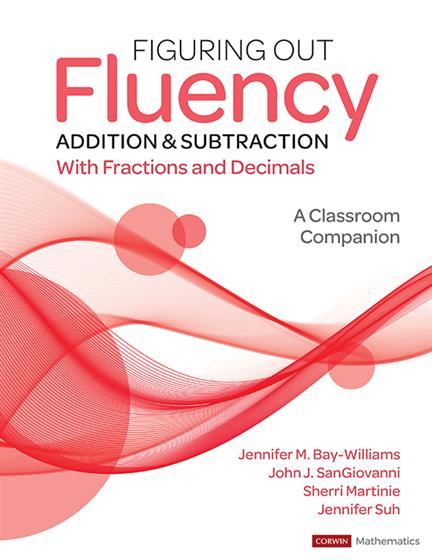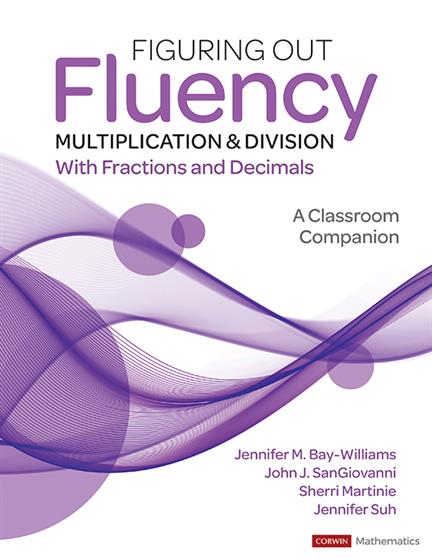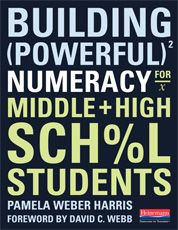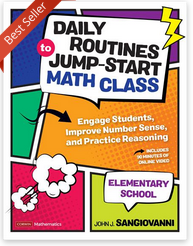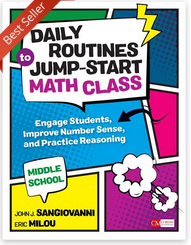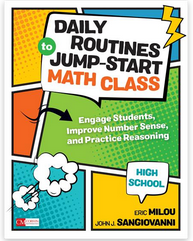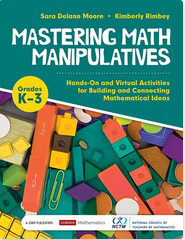Math Coach Resources
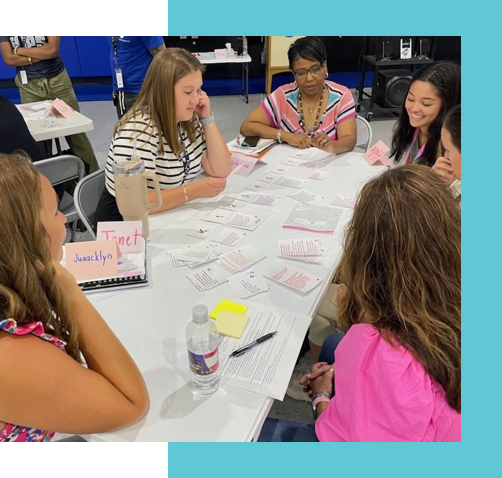 The role of a mathematics instructional coach is both exciting and challenging. When schools invest in a mathematics coach,
they see growth in teachers' content and pedagogical knowledge, increased student engagement, and rising assessment scores.
The role of a mathematics instructional coach is both exciting and challenging. When schools invest in a mathematics coach,
they see growth in teachers' content and pedagogical knowledge, increased student engagement, and rising assessment scores.
Professional learning for a coach should span several dimensions including mathematical content knowledge, including content standards and standards
for mathematical practice; pedagogical knowledge, including a deep understanding of effective mathematical practices; and knowledge of effective coaching
practices and leadership skills. Here are some of KCM's favorite resources for mathematics coaching.
Developing Coaching and Leadership Skills
- Cognitive Coaching by Thinking Collaborative is an 8-day professional
learning experience that develops the coach as a mediator of thinking and focuses on developing reflective and self-directed teachers
- In Content Coaching, the coach works side-by-side with the teacher through a three-part coaching cycle of preconference (planning), co-teaching, and postconference (reflecting).
For another example of content coaching, read this white paper.
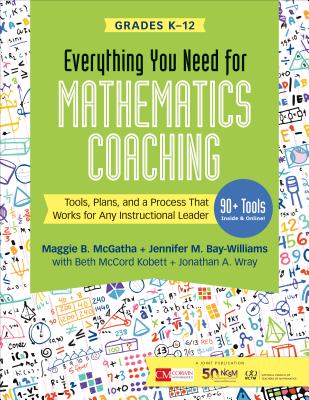 This book provides K-12 math coaches and teacher leaders a condensed explanation of critical mathematics coaching and teaching actions along with the tools to needed to do the work of navigating a coaching conversation and planning, facilitating and evaluating professional development.
This book provides K-12 math coaches and teacher leaders a condensed explanation of critical mathematics coaching and teaching actions along with the tools to needed to do the work of navigating a coaching conversation and planning, facilitating and evaluating professional development.
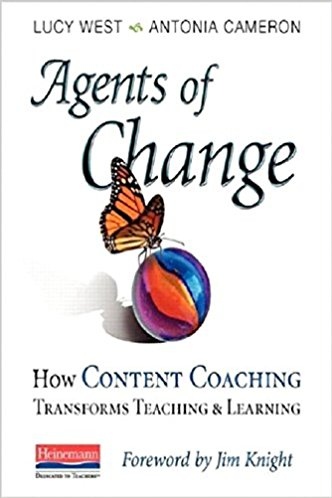 The primary audience for this book is K-8 coaches and teacher leaders and their administrators. It provides these educators with a big-picture understanding of the potential of content coaching for
transforming the culture within their schools and for improving student learning and achievement. In addition, it gives the coaches and teacher leaders specific techniques, tools and strategies for working
with teachers.
The primary audience for this book is K-8 coaches and teacher leaders and their administrators. It provides these educators with a big-picture understanding of the potential of content coaching for
transforming the culture within their schools and for improving student learning and achievement. In addition, it gives the coaches and teacher leaders specific techniques, tools and strategies for working
with teachers.
The Taking Action books support a coach in facilitating professional learning experiences to foster teachers' understanding of the Effective Mathematics Teaching Practices and their ability to apply those practices in their own classrooms. These books examine in depth what each teaching practice looks like in classrooms of various levels, with narrative cases, classroom videos,
and real student work, with ready-to-implement professional learning experiences.
The Catalyzing Change Series initiates the critical conversations on policies, practices, and issues that impact mathematics education at all levels. Mathematics education must provide a just, equitable, and inclusive system for each and every child. These books address why the status quo is unacceptable, what collective
actions should be taken to change it, and how to make a difference!
Content Knowledge and the Kentucky Academic Standards
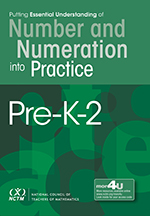 To deepen either a teacher's or coach's content knowledge, NCTM offers their over 15 books in their Developing Essential Understanding Series, spanning all grades, K-12, and content areas. For a discussion of
how those understandings are implemented in a classrooms, see the Putting Essential Understanding into Practice Series.
To deepen either a teacher's or coach's content knowledge, NCTM offers their over 15 books in their Developing Essential Understanding Series, spanning all grades, K-12, and content areas. For a discussion of
how those understandings are implemented in a classrooms, see the Putting Essential Understanding into Practice Series.
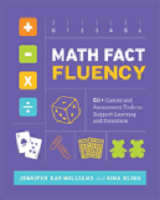 Mastering the basic math facts for addition, subtraction, multiplication and division is a cornerstone of the Kentucky Academic Standards. This book and the Math Fact Fluency Companion Website offer everything a teacher needs to teach,
assess, and communicate with parents about basic math fact instruction.
Mastering the basic math facts for addition, subtraction, multiplication and division is a cornerstone of the Kentucky Academic Standards. This book and the Math Fact Fluency Companion Website offer everything a teacher needs to teach,
assess, and communicate with parents about basic math fact instruction.
Fluency in mathematics is more than deptly using basic facts or implementing algorithms. Real fluency involves reasoning and creativity. The Figuring Out Fluency Series offers educators a deeper
understanding of procedural fluency, along with pragmatic tools for shifting a classroom toward a fluency approach.
Instructional Routines and Building Number Sense
Small changes can have a huge impact! Implementing instructional routines, including number talks, can be that small change. With just a few minutes per day, teachers build number sense and a
classroom community in which student-reasoning, sense-making,and discourse are valued.
Number Talks
Jo Boaler discusses “Why Number Talks” in this video.
Problem Strings
Problem Strings are a variation of number talks in which a series of related computation tasks are presented and discussed to elicit a specific property, computation strategy, or idea.
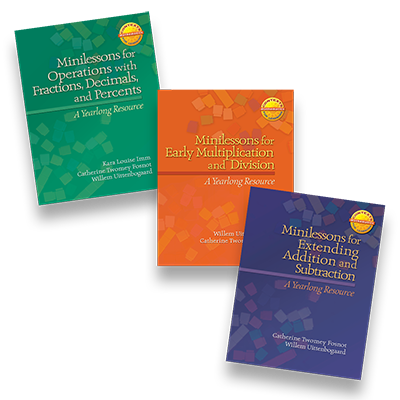
Grades K-6: Minilesson books are yearlong resource guides containing over seventy 10-15 minutes lessons that support the development of mathematical understanding and a growth-mindset. These math minilessons can be used to launch your daily instruction, as content for number talks, or with
small groups of students as you differentiate instruction.
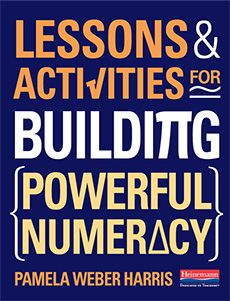 Grades 6-12: Building Powerful Numeracy for Middle and High School Students brings the world of research on numeracy at the elementary level to the secondary level, helping teachers build numeracy in their
students and showing how that work supports students in understanding higher math. Lessons and Activities for Building Powerful Numeracy continues the work by offering lessons and activities that promote
strategies for teaching as much mathematics as possible with as little memorization as possible.
Grades 6-12: Building Powerful Numeracy for Middle and High School Students brings the world of research on numeracy at the elementary level to the secondary level, helping teachers build numeracy in their
students and showing how that work supports students in understanding higher math. Lessons and Activities for Building Powerful Numeracy continues the work by offering lessons and activities that promote
strategies for teaching as much mathematics as possible with as little memorization as possible.
Other Instructional Routines
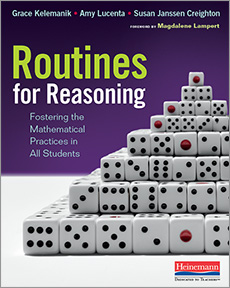 This book provides instructional routines focused on helping students develop their mathematica thinking and reasoning skills. It provides guidance for incorporating the Standards for Mathematical Practice into classroom instruction.
This book provides instructional routines focused on helping students develop their mathematica thinking and reasoning skills. It provides guidance for incorporating the Standards for Mathematical Practice into classroom instruction.
The Daily Routines to Jump-Start Math Class Series provide practice routines designed to jump-start reasoning, reinforce learning, and instill math confidence in students at the various levels of instruciton.
Online Resources for Routines
- Number Sense Routines from Steve Wyborney includes Esti-Mysteries, Splat, Hundred Chart Mazes, and more.
- Which One Doesn't Belong? provides thought-provoking puzzles for math teachers and students.
- Same But Different Math from Looney Math showcases two mathematical images and asks student to attend to what is the same, and what is
different, in both images. By highlighting shared features and attending to differences, students deepen their understanding of abstract mathematical ideas and underlying mathematical structures.
Additional Recommended Resources
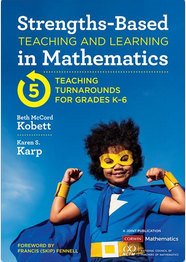 Teaching turnarounds encourage productive struggle by identifying teacher and student strengths, designing strengths-based instruction, discovering students' points of power, and promoting strengths in the school community.
Teaching turnarounds encourage productive struggle by identifying teacher and student strengths, designing strengths-based instruction, discovering students' points of power, and promoting strengths in the school community.
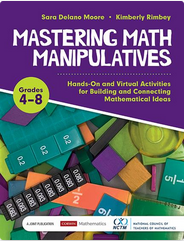 These books provide hands-on and virtual activities for making math manioulatives meaningful so math learning is concrete, profound, and effective for students. The books are designed to support a year-long PLC structure, with each chapter aligned to a particular type of manipulative.
These books provide hands-on and virtual activities for making math manioulatives meaningful so math learning is concrete, profound, and effective for students. The books are designed to support a year-long PLC structure, with each chapter aligned to a particular type of manipulative.
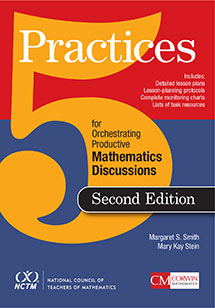 This book presents five practices that provide a framework for orchestrating mathematically productive discussions
rooted in student thinking. The framework helps teachers achieve high-demand learning objectives by using the work and thinking of students as the launching point for discussions
in which important mathematical ideas are brought to the surface, contradictions are exposed, and understandings are developed or consolidated.
This book presents five practices that provide a framework for orchestrating mathematically productive discussions
rooted in student thinking. The framework helps teachers achieve high-demand learning objectives by using the work and thinking of students as the launching point for discussions
in which important mathematical ideas are brought to the surface, contradictions are exposed, and understandings are developed or consolidated.
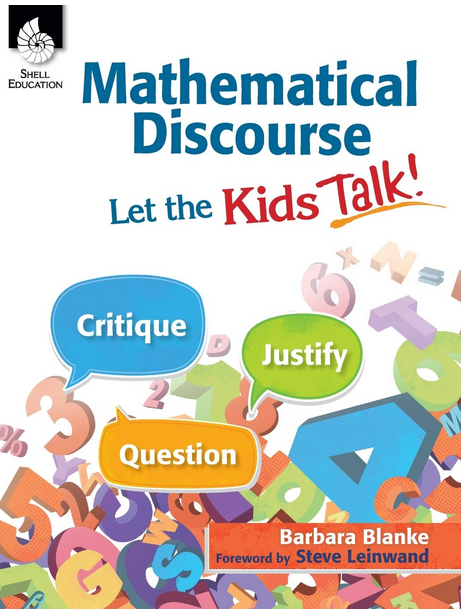 This book provides teachers with the tools needed to facilitate mathematical discourse in the classroom and create opportunities for students to think constructively, communicate effectively, and increase their mathematical proficiency.
This book provides teachers with the tools needed to facilitate mathematical discourse in the classroom and create opportunities for students to think constructively, communicate effectively, and increase their mathematical proficiency.
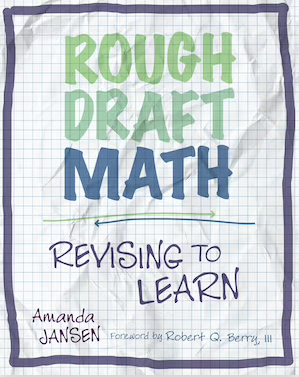 Talking and writing about unfinished ideas is vital to learning mathematics, but most students only speak up when they think they have the right answer - especially middle school and high school students. This books shows teachers how to create a
classroom culture where students readily participate and share their evolving understanding while engaging in math talk, collaborative problem solving, and ongoing revision of ideas.
Talking and writing about unfinished ideas is vital to learning mathematics, but most students only speak up when they think they have the right answer - especially middle school and high school students. This books shows teachers how to create a
classroom culture where students readily participate and share their evolving understanding while engaging in math talk, collaborative problem solving, and ongoing revision of ideas.
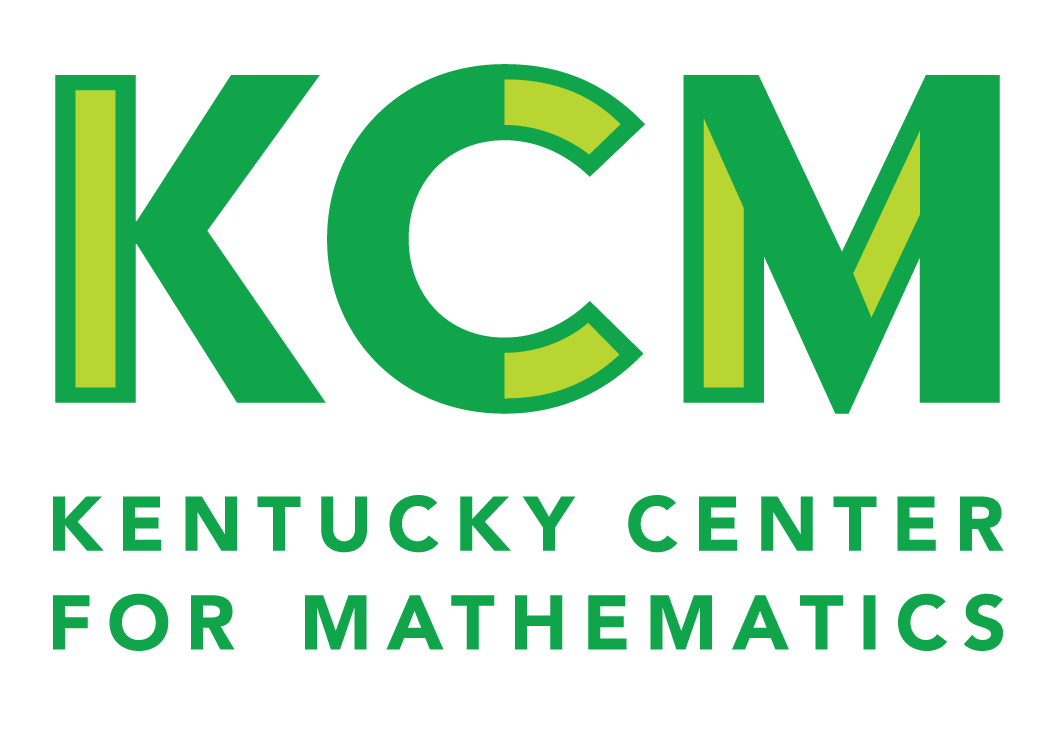
 The role of a mathematics instructional coach is both exciting and challenging. When schools invest in a mathematics coach,
they see growth in teachers' content and pedagogical knowledge, increased student engagement, and rising assessment scores.
The role of a mathematics instructional coach is both exciting and challenging. When schools invest in a mathematics coach,
they see growth in teachers' content and pedagogical knowledge, increased student engagement, and rising assessment scores.

